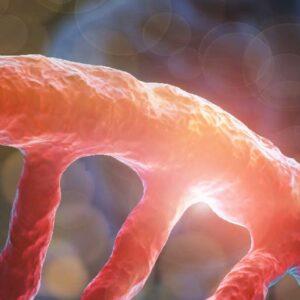Scientific Background
Muscular dystrophies are rare, hereditary, primary diseases of the musculature. They are clinically, genetically and biochemically heterogeneous conditions with overlapping clinical symptoms. They are characterized by progressive, usually proximal muscle weakness of varying degree, usually affecting limb, axial and facial muscles as well as respiratory and cardiac muscles and muscles involved in swallowing. The progressive muscular dystrophies are Duchenne/Becker muscular dystrophy, the myotonic dystrophies, the heterogenic group of limb‑girdle muscular dystrophies (LGMD), some of the dystroglycanopathies, and Emery-Dreifuss muscular dystrophy. It is a heterogeneous group of diseases with different age of manifestation, severity, course and accompanying symptoms. The wide range of hereditary muscle diseases inevitably leads to difficulties in classification, even for specialists.
The prevalence of muscular dystrophies ranges from 19.8 to 25.1 per 100,000 people per year. The most frequent forms are myotonic dystrophy type 1 (0.5-18.1 per 100,000 people per year), Duchenne muscular dystrophy (1.7-4.2 per 100,000 people per year), and facioscapulohumeral muscular dystrophy (3.2-4.6 per 100,000 people per year). LGMD and the congenital muscular dystrophies are rarer with prevalence rates in Northern England of 2.27:100,000 and 0.89:100,000, respectively.
A more recent definition of LGMD is a hereditary disease that primarily affects the skeletal muscles and results in progressive, predominantly proximal muscle weakness with loss of muscle fibers. For a muscle disorder to be designated LGMD, it must be observed in at least two unrelated families in which those affected learn to walk unaided, show elevated serum creatine kinase and degenerative muscle changes (replacement of skeletal muscle with fatty tissue) on imaging, as well as dystrophic changes in muscle histology.
Overall, progressive muscular dystrophies account for about one third of all muscular diseases in different populations. Since there are sometimes considerable clinical overlaps, panel diagnostics can be helpful for an exact diagnosis, taking into account the frequencies and following careful preliminary diagnosis.
Emery-Dreifuss muscular dystrophy
Genes: EMD, FHL1, LMNA, SYNE2
Duchenne/Becker muscular dystrophy (DMD)
Gene: DMD
Limb-girdle muscular dystrophies AD + AR
Genes: ANO5, CAPN3, CAV3, DYSF, FKRP, FKTN, LMNA, MYOT, SGCA, SGCB, SGCD, SGCG, TCAP, TRIM32
References
Straub et al. 2018 Neuromusc Dis 28:702 / Mathis et al. 2018, J Neurol Sci 384:50 / Nigro et al. 2014, Acta Myologica XXXIII:1 / Wicklund 2013, Continuum 19:1535





















